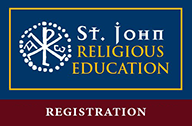Bulletins
December 9, 2012
Download the Bulletin as a PDFAdvent and Lent are great times of year to pick up some spiritual reading. Among the most significant writers of the 19th Century is Dom Prosper Gueranger, the refounding abbot of Solesmes Abbey and the author of the fifteen-volume commentary The Liturgical Year. The Church in France having been decimated by the French Revolution, Dom Gueranger restored religious institutions as well as the intellectual life and the interior life, all of which come together in the Sacred Liturgy. He will be writing the rest of these columns as we make our way toward Christmas.
This mystery of the coming, or Advent, of Jesus is at once simple and threefold. It is simple, for it is the one same Son of God that is coining; it is threefold, because He comes at three different times and in three different ways.
'In the first coming,' says St. Bernard, 'He comes in the flesh and in weakness; in the second, He comes in spirit and in power; in the third, He comes in glory and in majesty; and the second coming is the means whereby we pass from the first to the third.' [Fifth Sermon for Advent]…
The holy Church, therefore, during Advent, awaits in tears and with ardour the arrival of her Jesus in His first coming. For this, she borrows the fervid expressions of the prophets, to which she joins her own supplications. These longings for the Messias expressed by the Church, are not a mere commemoration of the desires of the ancient Jewish people; they have a reality and efficacy of their own, an influence in the great act of God's munificence, whereby He gave us His own Son…
The Church aspires also to the second coming, the consequence of the first, which consists, as we have just seen, in the visit of the Bridegroom to the bride. This coming takes place, each year, at the feast of Christmas, when the new birth of the Son of God delivers the faithful from that yoke of bondage, under which the enemy would oppress them. The Church, therefore, during Advent, prays that she may be visited by Him who is her Head and her Spouse; visited in her hierarchy; visited in her members, of whom some are living, and some are dead, but may come to life again; visited, lastly, in those who are not in communion with her, and even in the very infidels, that so they may be converted to the true light, which shines even for them…
But this annual visit of the Spouse does not content the Church; she aspires after a third coming, which will complete all things by opening the gates of eternity. She has caught up the last words of her Spouse, 'Surely I am coming quickly' [Apoc. xxii. 20]; and she cries out to Him, 'Ah! Lord Jesus! come!' [Ibid.]. She is impatient to be loosed from her present temporal state; she longs for the number of the elect to be filled up, and to see appear, in the clouds of heaven, the sign of her Deliverer and her Spouse…
Come, Lord Jesus!
Fr. Christopher J. Pollard



